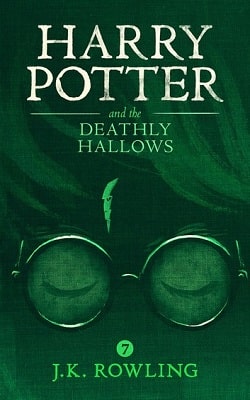I check my dwindling supply of real food. I’ve been “on the road” for thirty-two days now. According to my calculations, fifty-one days from now I’ll be completely reliant on coma slurry.
I go to the dormitory. “Computer. Provide coma food substance sample.”
The mechanical arms reach into their supply area and come back with a bag of white powder and drop it on the bunk.
I pick up the bag. Of course it’s a powder. Why would they include the liquid in the long-term storage? The water system of theHail Maryis a closed loop. Water goes into me, it comes out of me in various ways, and then it’s purified and reused.
I take the package to the lab, open it up, and pour some powder in a beaker.
I add a little water, give it a stir, and it becomes a milky-white slurry. I give it a sniff. It doesn’t really smell like anything. So I take a sip.
It takes effort, but I resist the urge to spit it out. It tastes like aspirin. That nasty pill-like taste. I’m going to have to eat this Bitter Pill Chow™every meal for several years.
Maybe a coma isn’t that bad.
I set the beaker aside. I’ll deal with that misery when the time comes. For now, I’m going to work on the beetles.
I have four little Taumoeba farms, courtesy of Rocky. Each one is a steel-ish capsule no larger than my hand. I say “steel-ish” because it’s some Eridian alloy of steel that humans haven’t invented yet. It’s much harder than any metal alloys we have, but not harder than diamond-cutting tools.
We went back and forth on the mini-farm casing. The obvious first choice was to make it out of xenonite. The problem is: How would Earth scientists get in? None of our tools would be able to cut it. The only option would be extremely high heat. And that risks harming the Taumoeba inside.
I suggested a xenonite container with a lid. Something that could be clamped down tight like a pressure door. I’d leave instructions on the USB stick on how to safely open it. Rocky rejected that idea right away. No matter how good the seal was, it wouldn’t be perfect. Over the two years that the farm will experience during the trip, enough air could leak out to suffocate the Taumoeba inside. He insisted the whole farm be a single, completely sealed container. Probably a good idea.
So we settled on Eridian steel. It’s strong, it doesn’t oxidize easily, and it’s extremely durable. Earth can cut it open with a diamond saw. And hey, they’ll probably analyze it to learn how to make their own. Everyone wins!
His approach for the farms themselves was simple. Inside, there’s an active colony of Taumoeba and a Venus-like atmosphere. Also, there’s a coil of very thin steel-ish tubing full of Astrophage. The Taumoeba can only get at the outermost layer, so they have to work their way down the tube, which has a total length of about 20 meters. Some basic experimentation tells us that will last the small Taumoeba population several years. As for waste products—they’ll just stew in their own poop. The capsule will gain methane and lose carbon dioxide over time, but it doesn’t matter. Though it’s a small volume by human standards, it’s a vast, gigantic cavern to the tiny microbes inside.
The beetles have been a priority for me. I want them ready for launch at a moment’s notice. Just in case there’s a catastrophic problem with theHail Mary. But I don’t want to send them off if there isn’t a mission-critical problem. The closer we are to Earth when they launch, the better their odds of making it there safely.
In addition to installing the mini-farms, I also have to refuel the little buggers. I’d used almost half their fuel supply when they served as ad-hoc engines for theHail Mary. But they only need 60 kilograms of Astrophage each to be full. Barely a drop in the bucket compared to my supply of imported, Eridian-made Astrophage.
The hardest part is opening the beetle’s little fuel bay. Like everything else around here, it wasn’t intended for reuse. It’s like adding fresh butane to a Bic lighter. It’s just not meant for that. It’s completely sealed. I have to clamp it into the mill and use a 6-millimeter bit to get in…it’s a whole big thing. But I’m getting good at it.
I finished John and Paul yesterday. Today I’m working on Ringo and, time permitting, George. George will be the easiest. I don’t need to refuel him—I never used him as an engine. I just have to attach the mini-farm.
Figuring out where to put the mini-farm was another matter. Even with its small size, it’s too big to fit inside the little probe. So I epoxy it to the undercarriage. Then I spot-weld a small counterweight to the top of the beetle. The computer inside has very strong opinions about where the center of mass of the probe is. It’s easier to add a counterweight than completely reprogram a guidance system.
Which brings us to the matter of weight.
The additional weight of the farm makes the beetles weigh a kilogram more than they should. That’s okay. I remember countless meetings with Steve Hatch discussing the design. He’s a weird little guy, but he’s a heck of a rocket scientist. The beetles know their location in space by looking at the stars, and if they have less fuel than they expected to have, they taper their acceleration down as needed.
In short: They’ll get home. It’ll just take a little longer. I ran the numbers and it’s a trivial difference in Earth time. Though the beetles will experience several additional months during the trip than the original plan.
I go to the supply cabinet and pull out the BOCOA (big ol’ container of Astrophage). It’s a lightproof metal bin with wheels. There are several hundred kilograms of Astrophage in there and I’m in 1.5 g’s of gravity. That’s why I added the wheels. You’d be amazed what you can do with a machine shop and a firm desire not to drag heavy stuff around.
I hold the handle with a towel because it’s so hot. I wheel it over to the lab table, settle into the chair, and get ready for the methodical refueling process. I get the plastic syringe at the ready. With it, I can squirt 100 milliliters of Astrophage into that 6-millimeter hole per shot. That’s about 600 grams. All told, I have to do it about two hundred times per beetle.
I open the BOCOA and—
“Ugh!” I wince and draw away from the container. It smells horrible.
“Uh…” I say. “Why does it smell like that?”
Then it hits me. I know that smell. It’s the smell of dead, rotting Astrophage.
The Taumoeba are loose again.
I leap from the stool, but I don’t have a plan.















